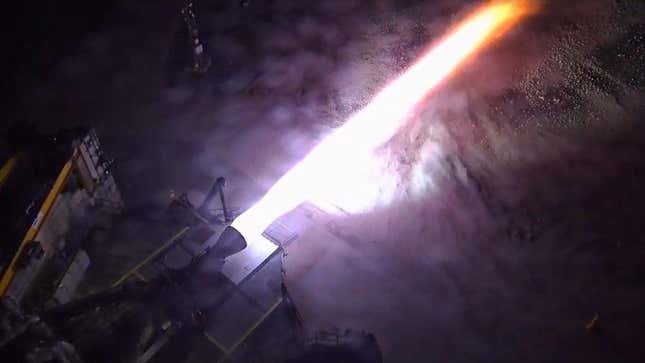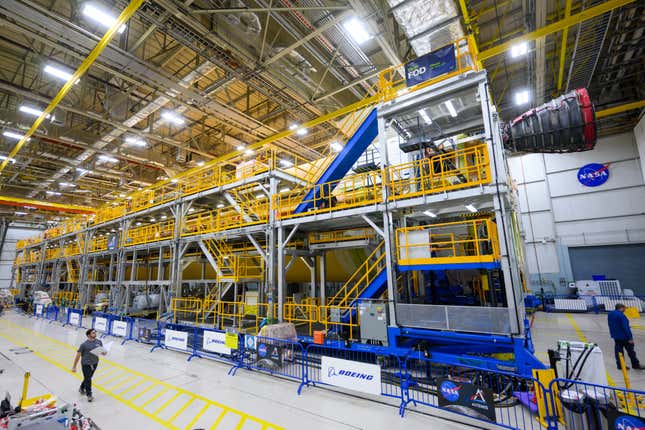In preparation of landing humans on the Moon as part of the ongoing Artemis program, SpaceX recently ran a test of one of its lunar lander engines while simulating the cold temperatures of space.
The private space venture demonstrated a vacuum-optimized Raptor, evaluating the engine’s performance “through a test that successfully confirmed the engine can be started in the extreme cold conditions resulting from extended time in space,” NASA announced on Thursday.
NASA signed a $2.89 billion contract with SpaceX to develop a human landing system for Artemis 3, which is tentatively scheduled to land astronauts on the Moon in 2025, in addition to a separate $1.15 billion contract signed last year for Artemis 4, which will follow in 2028.

Unlike other spacecraft, SpaceX’s Starship human landing system will sit in space for a while without being fired, which would cause the temperatures of its hardware to drop to a lower level than if it were to complete a short mission to low Earth orbit.
The test, which took place last month, was the second one to demonstrate the Starship Raptor engine’s ability to perform on the lunar surface. In November 2021, SpaceX tested the engine’s ability to perform a descent burn to land on the surface of the Moon. During the 2021 test, which lasted for 281 seconds, “Raptor demonstrated the powered descent portion of the mission, when the Starship [Human Landing System] leaves its orbit over the lunar surface and begins its descent to the Moon’s surface to land,” NASA wrote.
Despite the success of the two tests, there is concern that Starship could end up delaying NASA’s Artemis missions. Earlier in June, NASA’s Associate Administrator Jim Free said that Artemis 3 will likely be pushed to 2026 due to Starship delays. Free’s concern followed Starship’s first test flight in April, which ended with the rocket exploding in the skies.

NASA has its own Moon rocket to worry about it, though. This week, the space agency installed the first of four RS-25 engines on the core stage of the Space Launch System rocket (SLS) that will launch the crewed Artemis 2 mission to the Moon in 2024.
The space agency has a dozen RS-25 engines taken from retired Space Shuttles and modified for use on the SLS core stage, four engines have already been used for the Artemis 1 mission in 2022. The four engines are located at the base of the rocket’s core stage, and will fire non-stop for over eight minutes during launch and flight.
NASA has come under heat for going over budget on its SLS rocket, which space agency officials recently admitted to be unaffordable.
Want to know more about humanity’s next giant leap in space? Check out our full coverage of NASA’s Artemis Moon program, the new Space Launch System (SLS) rocket and Orion spacecraft, the recently concluded Artemis 1 mission around the Moon, the four-person Artemis 2 crew, NASA and Axiom’s Artemis Moon suit, and the upcoming lunar Gateway space station. And for more spaceflight in your life, follow us on X (formerly Twitter) and bookmark Gizmodo’s dedicated Spaceflight page.

